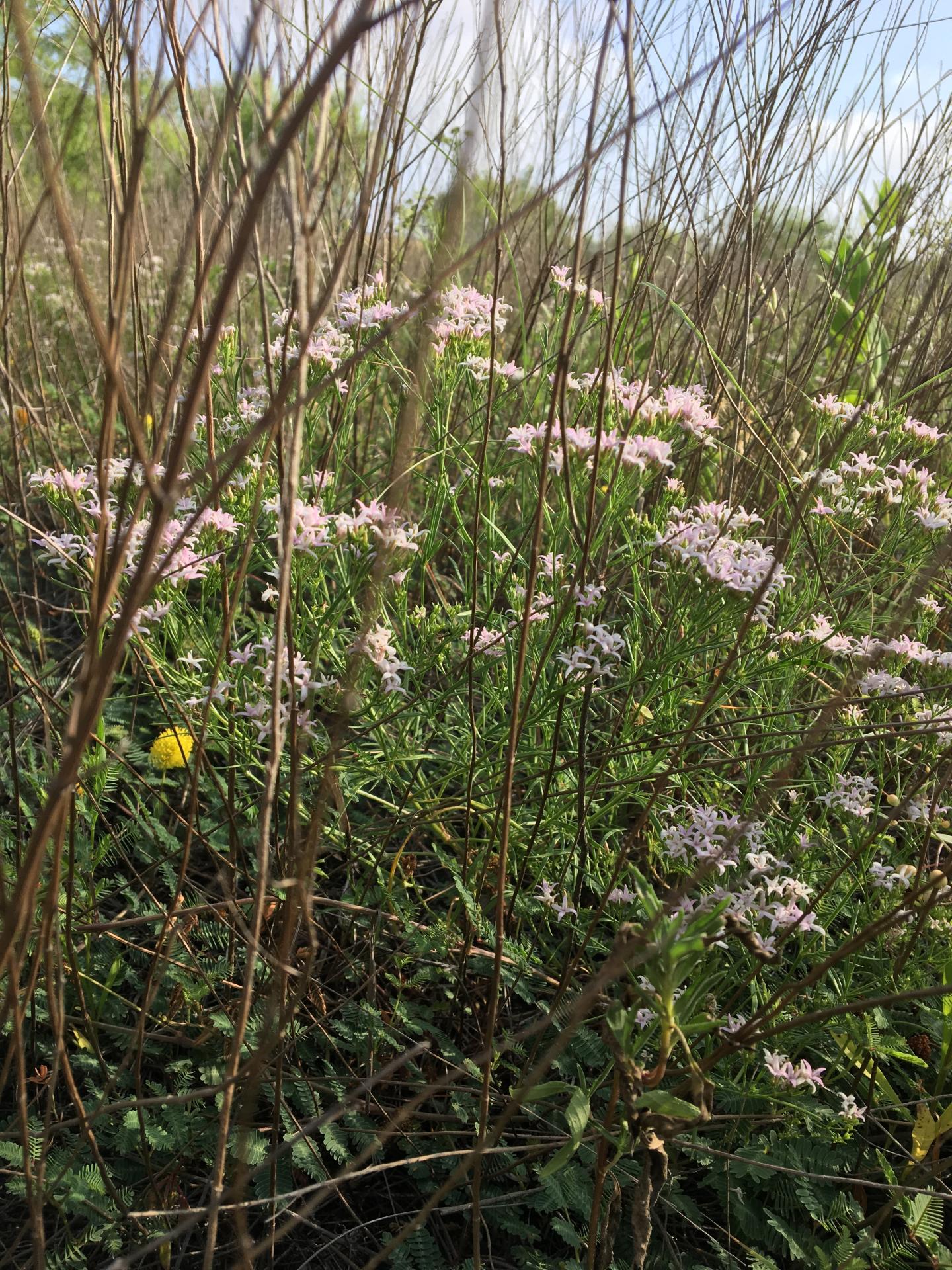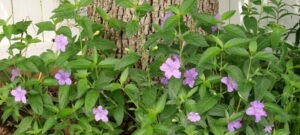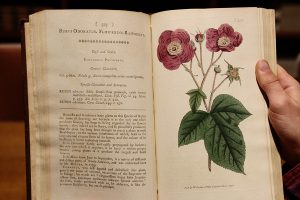Article written by Kelly Carroll, 2018 BRIT Herbarium and Research Intern and student at Trinity University. Kelly interned with Dr. Brooke Best and Resident Research Associate Dan Caudle, working with the All Saints Episcopal School Biodiversity Assessment Project within the Prairie Research Program (PReP).
The property doesn’t look like much, driving by – a sea of seemingly uniform brown grass studded with mesquite trees, bordered by development and what looks to be a small-scale hackberry forest with a dry creek-bed running through it. Of course, everything looks different when you get close enough to see detail. Still, I didn’t have very high expectations when I arrived with Dan Caudle, a BRIT Resident Research Associate and grass and prairie expert, in May of 2018 to do a survey of the vegetation cover and biodiversity on the property ahead of construction that would ravage a good-sized section.
When the summer started, I had no real experience in identifying anything beyond being able to say, “That is a grass, yes sir.” I looked out at this piece of property and saw, on one side of a fence, a sea of beggar’s lice, skeletal ragweed remnants, and dozens of hackberry trees, and on the other side, a sea of brown grass grazed within an inch of its life by cattle for decades. In a few words, the land looked to be chigger heaven, tick heaven, and nothing more than that.
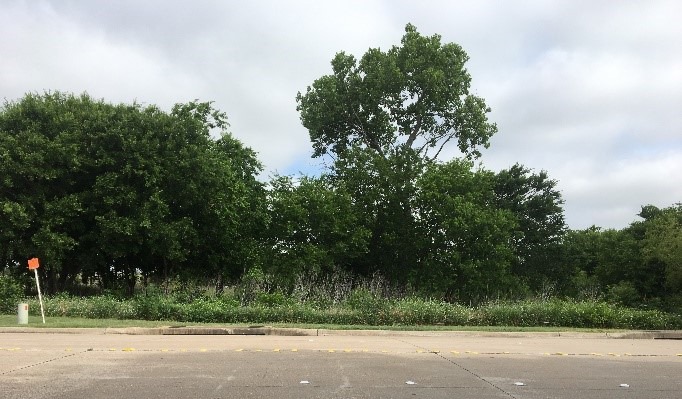
I soon learned that I wasn’t wrong about the land being chigger heaven … the hard way. But I was wrong otherwise. That piece of property held a few surprises behind a shielding wall of hackberry trees and brush. Some of the surprises weren’t pleasant – including the patch of poison ivy waist-deep and the size of a backyard swimming pool. (Our luck being what it was, our survey line ran directly through that patch of ground. I managed to avoid having a reaction to the plant, likely more due to luck than any sort of skill.)
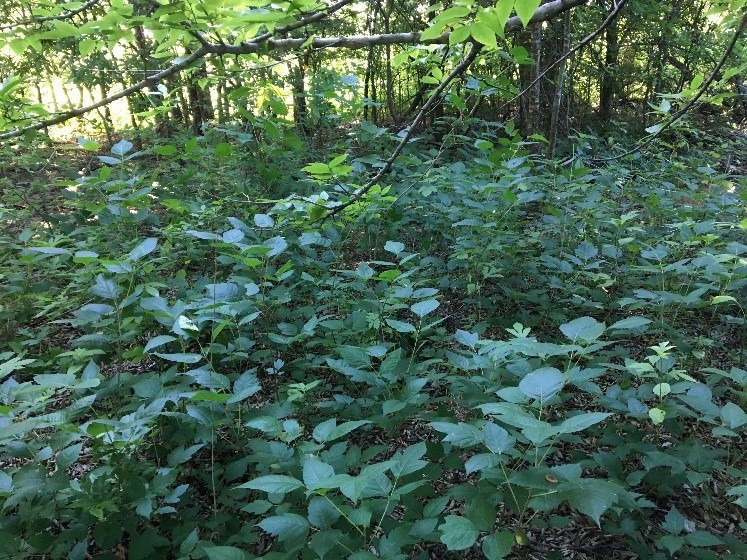
Some of the surprises, though, were not only pleasant but unexpected in the best way. Dan and I found a little bluestem plant whose old seedheads had grown to be almost as tall as me, with a base more than a foot in diameter.
We found multiple areas covered in grasses we’d never expected to find – yellow indiangrass and big bluestem, both tall grasses that used to dominate in the area long before development and cattle ranchers moved in, still somehow growing and thriving in a little patch of land roughly the size of a football field, surrounded on all sides by development.
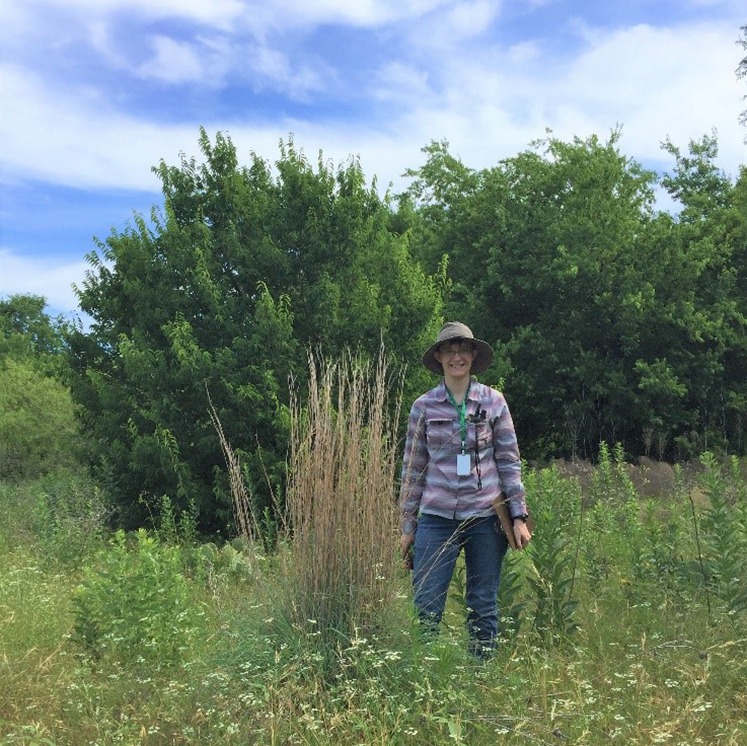
In fact, we found more species in that little patch of land than we ever expected – none particularly rare, but certainly more exciting than my first impression of hackberry trees, ragweed, and some single generic grass.
Now, summer draws to a close, and I’m wrapping up the loose ends of this project, tying them into bows and slipknots, ready for other people to pick them up and unravel them to see what new discoveries could fall out. At the start of the summer, I could identify the very basics – tree, grass, wildflower, ragweed. Now, I may not be able to identify everything in a field by sight, but I can “speak the language,” as such, and I know how (and who) to ask for help. Thanks to Dan, I can identify more grasses than anything else – big bluestem’s base is incredibly hairy, yellow indiangrass is blue-green with wide, decently rigid leaves, and little bluestem is blue-green with narrow leaves. At the start of the summer, all that I saw in that empty field was the prospect of dozens of chigger bites and a lot of work. Now, I look into the property and see opportunity, as cliché as it sounds; future work on the property will add to my findings, add to my collections, and keep a record of the biodiversity of that area, hopefully for years to come.
Some other things I learned, deep in the hackberry woods and the grassy expanse:
- Never use a green or brown pencil in the field. I can’t count the number of times I almost lost my pencil after putting it down and turning away for a few seconds. It became a running joke that I needed to put a beeper on the thing, the number of times I started pawing around my legs saying, “Where’d I put my pencil? It was just here. Just, just right here.”
- Stay hydrated. I carried two bottles of water into the field and drank them both in the four hours I stood under the sun, sometimes shaded by the hackberries but always enduring the humidity and the bugs.
- Speaking of bugs, it’s never worth it to wear short anything into a field. The one time I wore short sleeves, I acquired six new mosquito bites in an hour, three mysterious scrapes from shoving through brush, and still felt like I was melting. (I never tried to wear shorts.)
- Sometimes, picking all of the beggar’s lice out of the socks they manage to adhere themselves to just isn’t worth it. I sacrificed one pair of socks, instead of picking out the hundreds of little seeds stuck to every inch of the fabric. After one day, I’m sure that I had an even two thousand little seeds stuck to me from the waist down.
- I’m still learning, and I always will be.

***Further information on Kelly’s project and research findings can be found here.

